Considered opinion on The Magic Circle is that there is no clear precedent for the story it depicts. Indeed the Tate Gallery’s own notes on the painting suggest “The meaning of the picture is unclear”.
However our article in the Summer 2023 Pre-Raphaelite Review: A Mirror of Poesy: New evidence for the inspiration behind John Waterhouse’s The Magic Circle & Maurice Greiffenhagen’s An Idyll: and for the optical effect at the heart of Waterhouse’s masterpiece, has a new interpretation of the work.
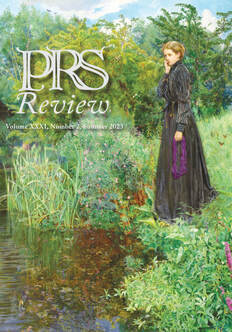
A reference to the Pall Mall Gazette in Rob Cartwright’s biography of J W Waterhouse, comments on the painting thus “…illustrates without exaggeration one of the most brilliant scenes of Theocritus.”
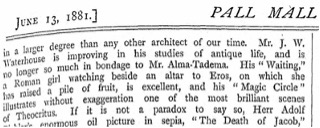
Our journal article argues that the painting is inspired by Theocritus’s Second Idyll, more commonly known as “The Sorceress”, in particular CS Calverley’s 1866 translation of the Idylls.
Simaretha, the speaker of the poem is casting a spell to conjure up her faithless lover, Delphis.
Some literal translations
“Where are the bay-leaves, Thestylis, and the charms?
Fetch all; with fiery wool the caldron crown;
Let glamour win me back my false lord’s heart!
Twelve days the wretch hath not come nigh to me,
Nor made enquiry if I die or live…
…I’ll off to Timagetus’ wrestling-school
At dawn, that I may see him and denounce
His doings; but I’ll charm him now with charms.”
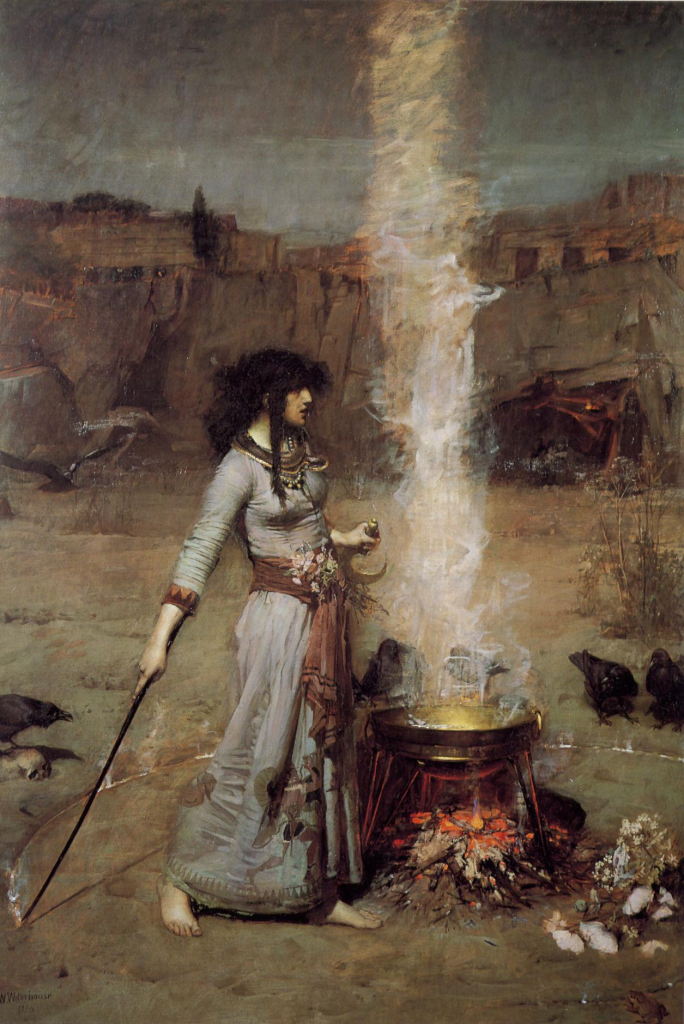
Simaetha invoking Delphis by burning items in a cauldron
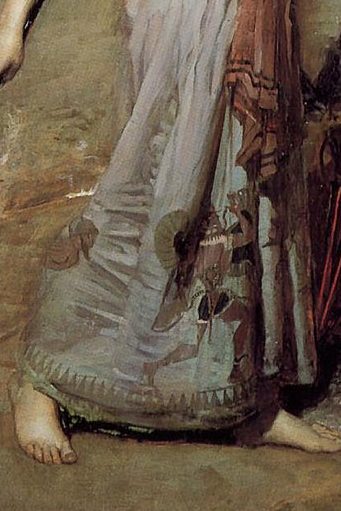
The figure on the skirt of Waterhouse’s sorceress a Spartan warrior trained in the wrestling school? Later in the poem, Simaetha speaks of his “Dorian flask” which suggests Spartan connections
“So shine out fair, O moon! To thee I sing
My soft low song: to thee and Hecatè
The dweller in the shades, at whose approach
E’en the dogs quake, as on she moves through blood”
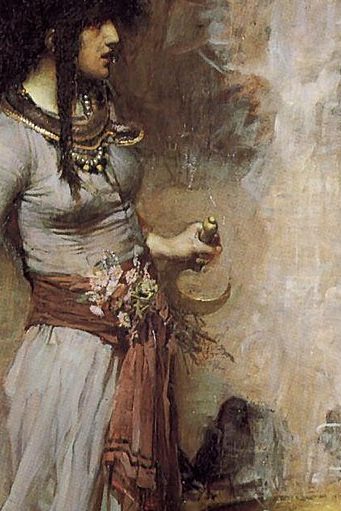
The Tate Gallery’s description tells us “link[s] her with the moon and Hecate.”
“And darkness and the barrows of the slain.”
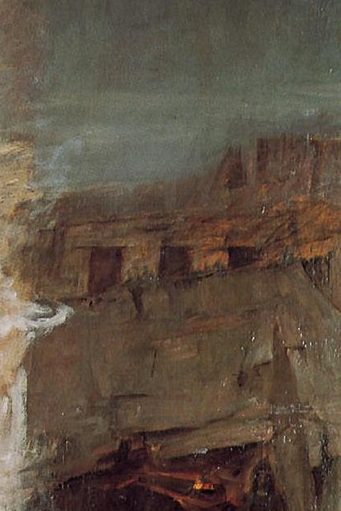
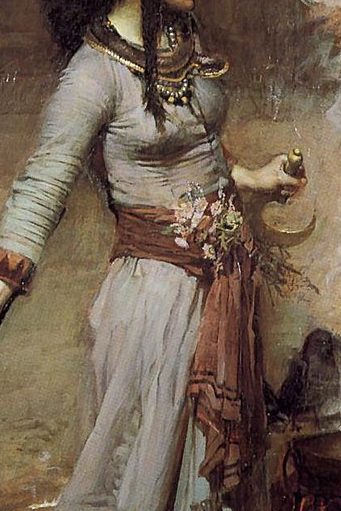
“The coltsfoot grows in Arcady, the weed that drives the mountain-colts and swift mares wild.
Like them may Delphis rave..”
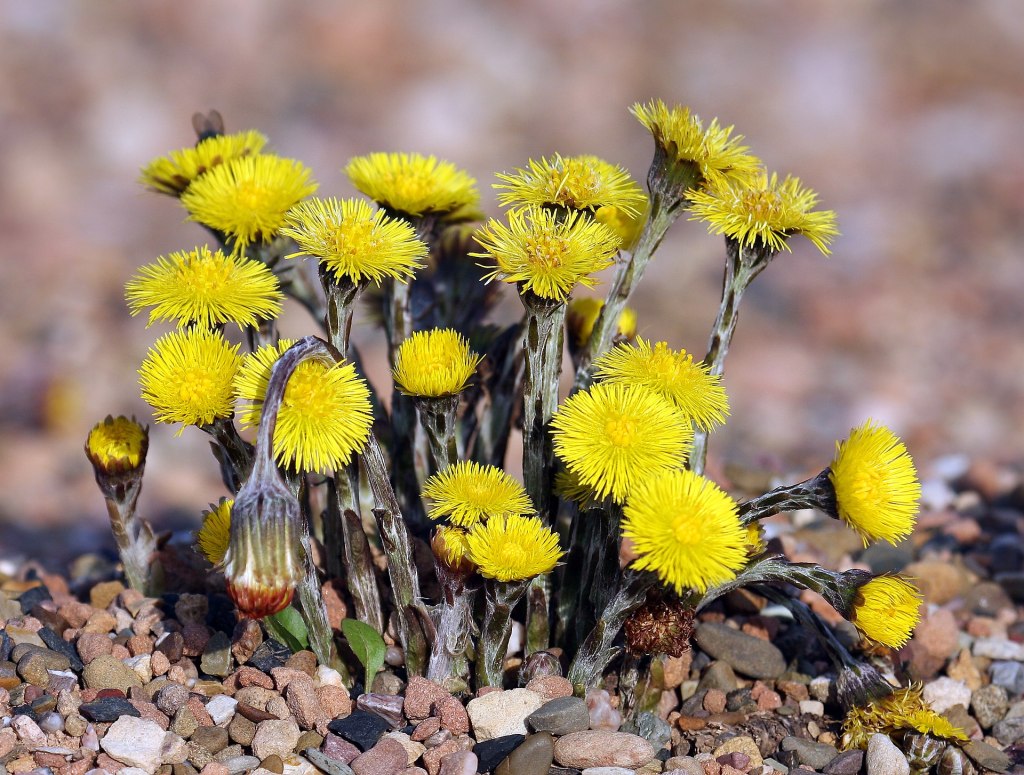
We also suggest Waterhouse’s Hylass and the Nymphs as well as Griggenhagen’s An Idyll drew inspiration from Theocritus.
In his time, Theocritus’s poem was meant to be performed, and is what Waterhouse painted not a performance of another type?
More argument for THE FACE
In our original essay for the PRS we proposed that a face is visible within the painting – and speculated that this might be a deity, or perhaps even Waterhouse himself.
We now think the face is that of Delphis, Simaetha’s faithless lover whose presence she is conjuring through her fire-ritual.
In terms of the optical effect : we think that a correct viewing distance along with the muted palate of the painting allow the effect to become visible.
The landscape and central figure are oriented with key features available to depict a face within – the sorceress’ head and the cave opposite become eye sockets, the luminous column of smoke is the bridge of the nose, the rocky cliff becomes the brow.
As the painting is so large (1.8 x 1.3 metres) the viewing distance needed is substantial – about 25 metres. If you create a j.peg of the painting and zoom out, you can begin to see the effect as the colours appear to bleach out and a monochromatic face emerges.
How would Waterhouse have achieved the effect without the benefit of a 25 metre gallery? Our experiment with inverted binoculars and later a convex mirror (an important feature in later Waterhouse paintings) created the effect with some success. Similarly we have explored various lenses to enhance the effect.
More detail can be found in the PRS Review article and we urge you to read the full version of Theocritus’s poem yo judge for your self.
Leave a comment